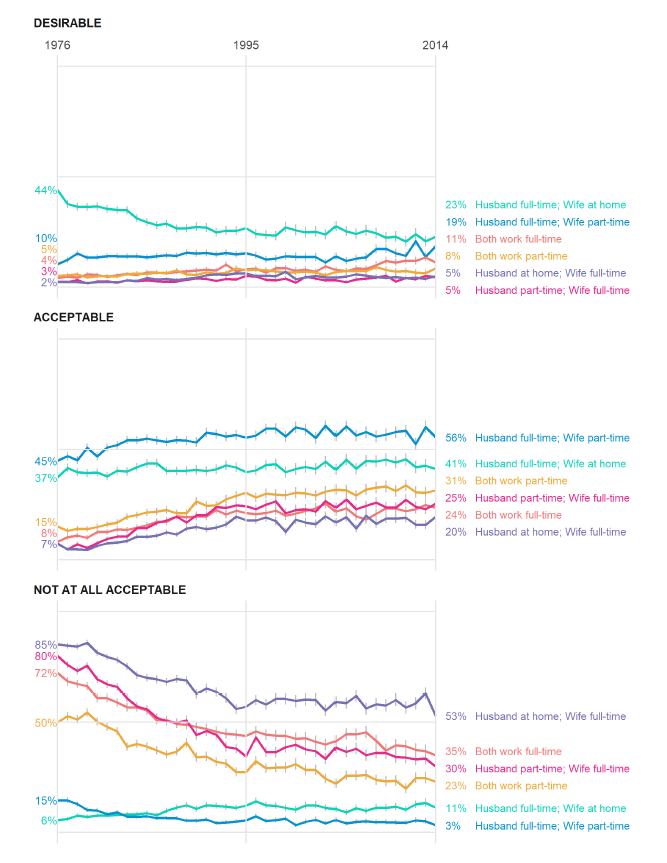Back in February, New York Times writer Clair Cain Miller wrote a piece about recent research on the gendered division of labor among heterosexual partners. Part of her article discussed the study by sociologists Brittany Dernberger and Joanna Pepin, who used Monitoring the Future data to track 12th-graders’ attitudes towards division of labor arrangements from 1976 to 2014. These students were asked to imagine being married and having at least one preschool-aged child. They were asked to indicate the desirability of various division of labor schemes (e.g. “husband works full time, wife doesn’t work” or “husband workers about half time, wife works full time”; the only permutation of working full-time/working half-time/not working not asked was both husband and wife not working). They found that while the desirability of the traditional breadwinner-husband/stay-at-home wife scheme had declined since the 1970, it was still the most desireable arrangement in 2014. In 1976, 44 percent of students thought the traditional arrangement was “desireable” (as opposed to “acceptable” or “not at all acceptable”); in 2014 this was down to 23 percent. But people desiring gender parity (saying that both working part-time or both working full-time were desireable) had risen only slightly, from 9 percent to 19 percent.

For my general education statistics class, an early assignment I have my students do is double-check a media write-up of results so they go from the media piece, to the study, and then they go and look into the actual data documents (like questionnaires). In this case, it looks like Miller’s write-up checks out. It was a little bit of a struggle to get the MTF questionnaires or codebooks but ICPSR has them; in the case of 2014, the questions about imaginary division of labor arrangements is in “Form 2”.
